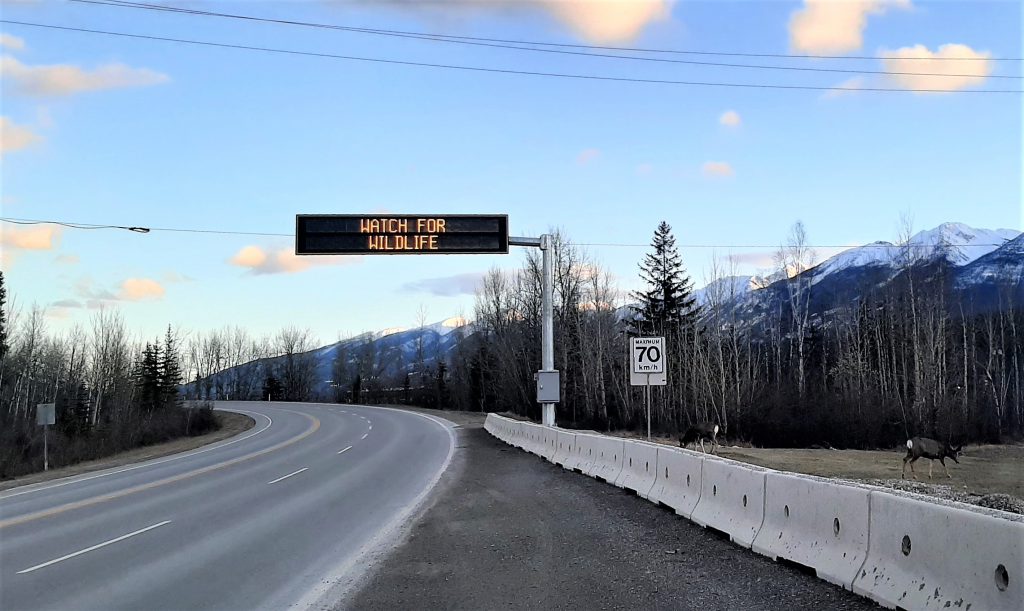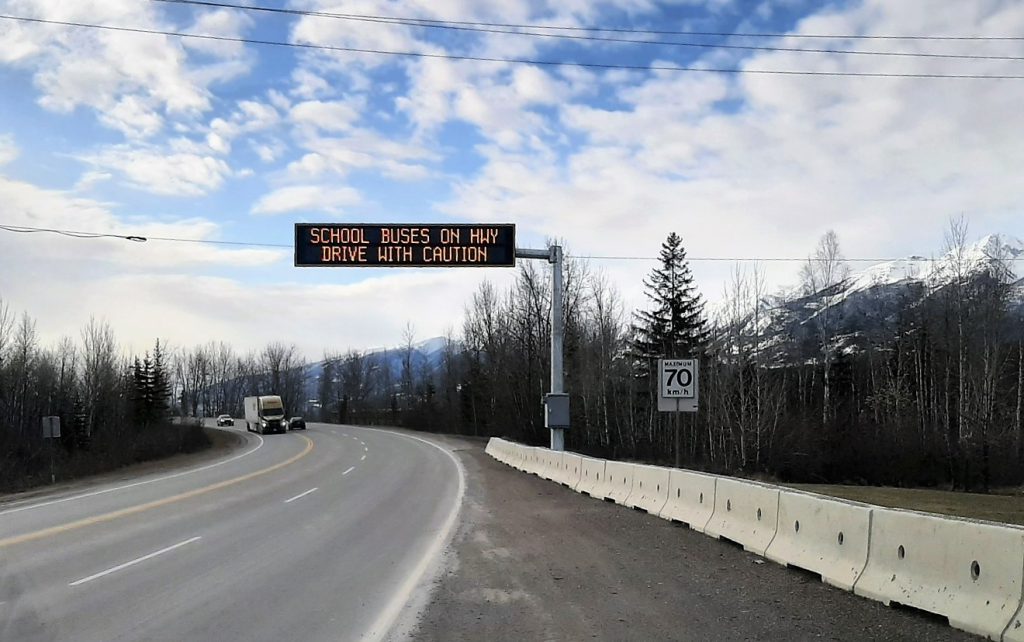The alternate route
The alternate route of Highways 93S and 95 will add an extra 1.5 hours or so to the typical “through” trip between Castle Junction, east of Lake Louise, AB, and Golden, BC.
The extended closures are timed to occur when traffic volumes on both the Trans-Canada Highway and the alternate route are lowest. The effect will be to add low volumes to low volumes, not peak volumes to peak volumes, although the result will be more traffic on the alternate route than normal for the time of year. The rule of thumb is to expect shoulder-season traffic conditions to be similar to what might be experienced in the summer.
An assessment of the alternate route confirmed that it would perform well from both a safety and capacity perspective. See here for a simulation based on the traffic model. The experience in the early days of the first extended closure appear to support the analysis. A number of enhancements have been deployed to improve operations, including:
- New signalized intersection in Golden to improve traffic flow and turning movements into the main town center
- Widening and realignment of the highway in Golden, south of the town bridges, to improve north-bound commercial truck access to the bridges
- Creation of dedicated left turn lanes to improve turning movements at a high-volume intersection in Golden
- Enhancement of wildlife corridor signage between Golden and Radium
- Enhanced highway maintenance during upcoming use of the alternate route on both Highway 95 and Highway 93S
- Additional pavement marking in the fall on both Highways 95 and 93S
- Construction of a new commercial vehicle inspection site near Harrogate
- Intersection improvements on Highway 95 in the Edgewater area
- Construction of a new roundabout in Radium
- Addition of three overhead Dynamic Message Signs to provide messaging to drivers related to wildlife, school bus operations, road conditions, and potential congestion
- Enhanced patrols and enforcement along Highways 95 and 93S during alternate route implementation
- Rock removal through Sinclair canyon to provide commercial trucks with additional room (Parks Canada)
- Enhanced pavement marking through Sinclair Canyon (by Parks Canada)
- Expansion of a brake check along Highway 93S (by Parks Canada)
Parks Canada also recently announced the establishment of four satellite-based emergency call boxes on Highway 93S in Kootenay National Park to provide emergency communications in an area not served by regular cell service.
Highway 93S from Castle Junction to Radium Hot Springs through Kootenay National Park features the Parks Canada driving experience of beautiful vistas and abundant wildlife. To protect wildlife and people, Parks Canada applies and enforces an annual no-stopping zone in late spring as bears emerge from hibernation between Settler’s Road and McKay Creek Operations Centre above the Radium hot pools.
Highway 95 from Radium to Golden is a scenic rural highway, with limited passing opportunities, frequent wildlife sightings, hidden driveways, and the presence of school buses and children.
During traffic diversion periods, expect increased presence and enforcement from RCMP and CVSE (Commercial Vehicle Safety and Enforcement). Motorists are urged to be mindful of these factors on a route that may be unfamiliar to them. Be patient, be safe and be respectful of all road users; observe speed limits, and remember to stop in both directions when school bus lights are flashing.
In addition to the physical enhancements, there is ongoing engagement with Columbia Valley First Responders to help ensure that emergency response is well-coordinated. Over the past two years the Kicking Horse Canyon Project team has also undertaken an active outreach to the BC Trucking Association and other organizations to increase awareness of the characteristics of the route, including the presence of children, school buses and wildlife. DriveBC will be used to broadcast Trans Canada Highway closures and alternate route conditions to the travelling public.
Highway operations during diversions will be monitored to identify any possible adjustments that might be needed.





